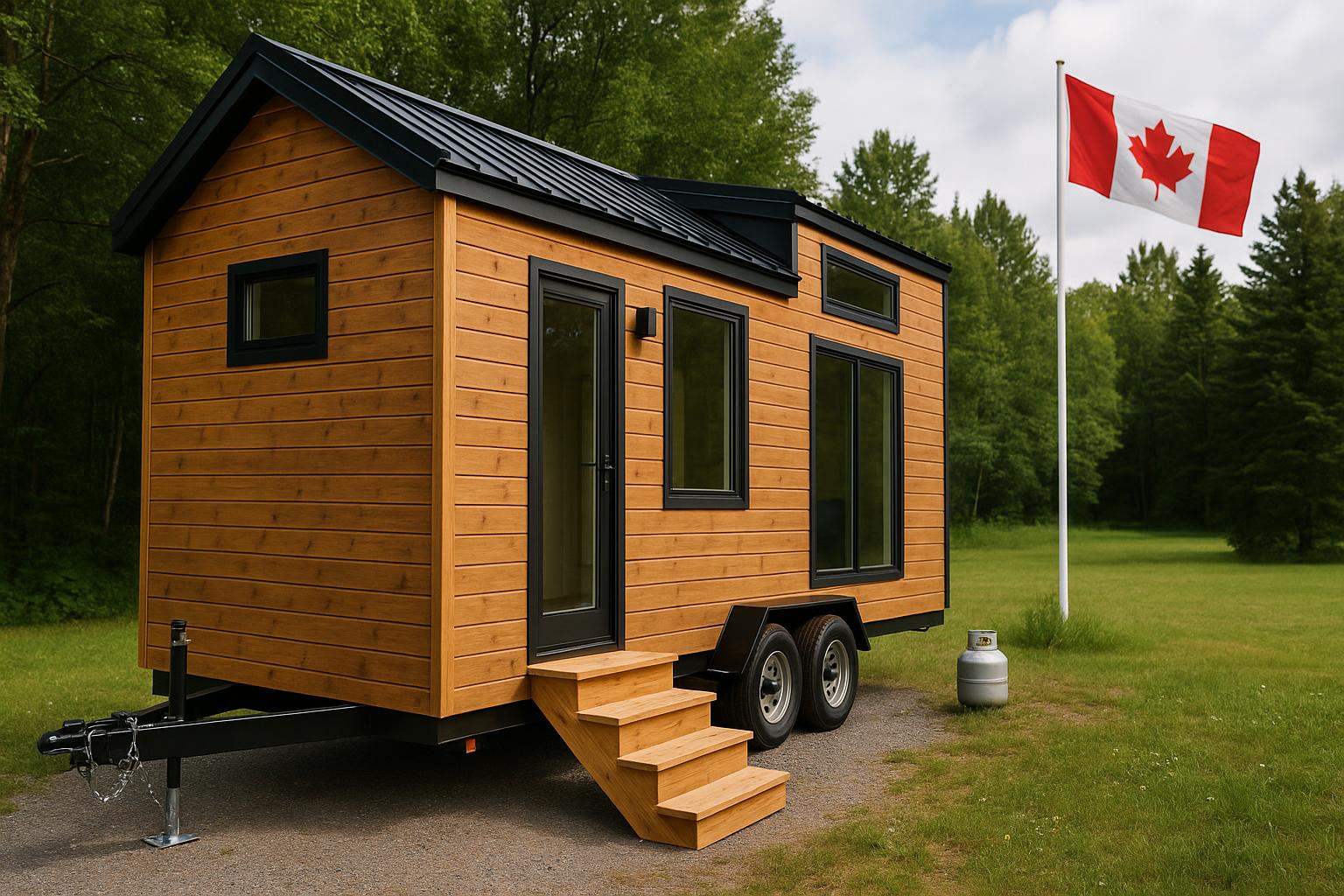
Estimated reading time: 8 minutes
Key Takeaways
- Tiny home certification in Canada is essential for legal compliance and safety.
- CSA standards such as CSA Z240 MH and CSA A277 form the backbone of the certification process (source).
- Building codes and modular home compliance ensure that tiny homes are safe, durable, and energy efficient (source).
- Regulatory updates in 2025 are driving enhanced classification, stricter CSA certification, and local zoning reforms (source).
- Both builders and buyers must verify certifications and meet local codes to guarantee a secure investment.
Table of contents
Overview of Tiny Home Certification Canada
Tiny home certification Canada is now a critical part of buying or building a tiny home. With the growing popularity of small, affordable living spaces, proper certification is essential in ensuring your tiny home meets current safety and structural standards set by regulatory bodies. As of 2025, more Canadians are exploring tiny home living to address rising housing costs—and this guide is here to explain everything from CSA standards to local building codes. For recent regulatory insights, check out the source and source. For broader insights on the lifestyle benefits, see tiny home living benefits.
CSA Standards and Their Impact on Tiny Home Certification
Tiny home certification relies on the rigorous testing and approval of Canadian Standards Association (CSA) protocols. These standards are vital as they:
- Ensure Safety: Verification of electrical, plumbing, and structural elements.
- Guarantee Durability: Checking quality materials, moisture barriers, and insulation.
- Promote Energy Efficiency: Verified installations help reduce energy costs.
The two key CSA standards for tiny homes include:
- CSA Z240 MH: Applicable to manufactured homes that serve as permanent dwellings.
- CSA A277: Focused on factory-built modular homes, ensuring pre-delivery compliance (source).
By following these standards, tiny homes are better positioned for smooth approval by municipal and provincial authorities.
Building Codes and Modular Home Compliance in Canada
Building codes set the rules for design, construction, and occupancy in Canada. They vary widely between provinces and municipalities, and the National Building Code of Canada often serves as the foundation.
- Provincial and Municipal Variance: Local codes might add extra requirements, which demands additional research (source).
- Design Barriers: Specific code requirements such as ceiling height and emergency exits must be carefully adhered to.
For modular home compliance, tiny homes built in sections must meet the CSA A277 or CSA Z240 MH standards. This process is crucial to ensuring the tiny home is legally recognized and safe for permanent residency (source) and further information can be found on issues regarding code compliance at Canadian ADU Regulations Guide.
Canada 2025: Changes to Tiny Home Certification (And Why They Matter)
As of 2025, regulatory updates have sharpened the focus on tiny home certification. Key changes include:
- Clearer Classification: Tiny homes are now classified as manufactured housing rather than recreational vehicles, ensuring stricter safety and quality assurance (source).
- Stricter CSA Certification: Adoption of CSA A277 and CSA Z240 MH standards is now mandatory for legal approval (source).
- Local Zoning and Code Reform: New bylaws clarify design parameters and service requirements, streamlining the approval process (source).
These changes enhance market acceptance, facilitate better financing and insurance options, and integrate tiny homes more firmly into community planning. Additional details on zoning and permits can be found at tiny home permits in Canada.
Practical Steps for Builders and Buyers
For Tiny Home Builders: Meeting CSA Standards and Building Codes
- Integrate CSA Standards: Use CSA Z240 MH or CSA A277 as your blueprint and stay updated with local codes.
- Document Inspections: Maintain clear records of all inspections and approvals.
- Work with Accredited Agencies: Engage with recognized certification bodies to ensure valid CSA certification.
- Prioritize Local Compliance: Secure all necessary permits before constructing (tiny home builder guide).
- Apply Modular Construction Methods: Ensure your design complies with transportation, assembly, and installation standards (source).
For Tiny Home Buyers: Verifying Certification and Code Compliance
- Check CSA Certification: Request documentation that confirms compliance with CSA Z240 MH or CSA A277.
- Verify Labels and Approvals: Look for physical labels or metal plates that indicate certified construction.
- Confirm Building Code Compliance: Ensure all records demonstrate adherence to local and national standards.
- Evaluate Materials and Reputation: Research the builder’s track record and material quality.
- Understand Financing Options: Consult with your lender or insurer to verify required documentation (source).
Conclusion: Why Tiny Home Certification Canada is Essential
Tiny home certification in Canada is more than a label—it is a guarantee that your tiny home meets rigorous CSA standards, adheres to building codes, and complies with modular home requirements. This certification not only protects buyers and enhances resale value but also builds trust among lenders and insurers.
- For Builders: Early compliance planning saves time and bolsters reputation.
- For Buyers: Comprehensive verification ensures a safe, legally compliant, and high-value investment.
Staying informed and working with accredited agencies will help both builders and buyers navigate the evolving regulatory landscape, especially as 2025 heralds stricter standards for a safer and more sustainable tiny home market. For more detailed insights, visit the CSA Certified Tiny Homes, Canadian Recreational Vehicle Association, and Tiny House Builders Guide.
Frequently Asked Questions
What is tiny home certification Canada?
It is a process whereby a tiny home is inspected and verified to meet Canadian standards, including CSA guidelines and local building codes. This certification ensures the home is safe for permanent occupancy.
Which CSA standards apply to tiny homes?
The primary standards are CSA Z240 MH for manufactured homes and CSA A277 for factory-built modular homes. Both ensure quality and safety in construction.
Why is building code compliance important?
Building codes ensure that all design and safety measures are met, and compliance helps secure legal permits, financing, and insurance coverage for tiny homes.
How do regulatory changes in 2025 affect tiny home certification?
Changes include clearer classification as manufactured housing, stricter CSA certification requirements, and updated local zoning bylaws, making the process more streamlined and secure for both builders and buyers.
Where can I find more information on tiny home financing and builder guides?
You can visit resources such as Tiny Home Builder Canada Guide and Tiny Home Financing Canada Guide for comprehensive insights.

Leave a Reply